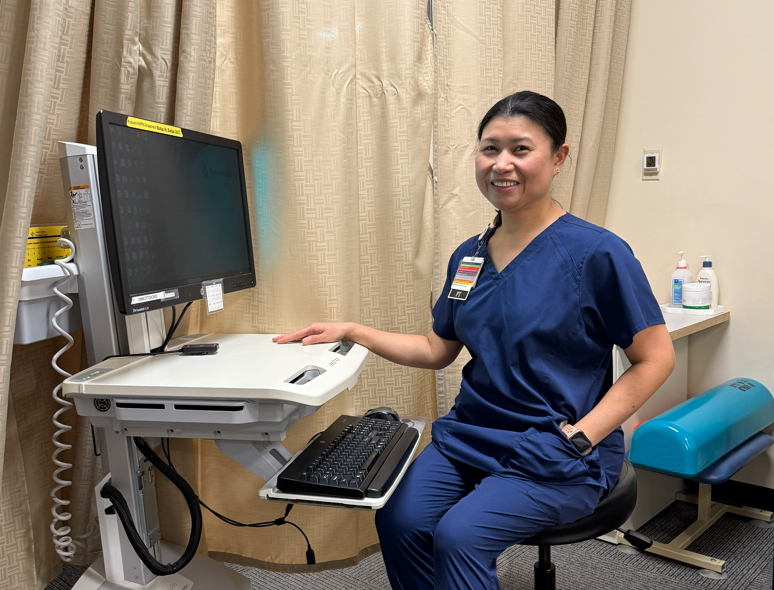Arleen Beviacqua-Enriquez noticed two things about her body in the fall of 2019. First, an irregular mole, which the 65-year-old had already developed a trained eye to spot. Its irregular edges told a familiar tale. Moles are a hereditary condition passed down for generations in her family. The second? A lump in her breast.
Beviacqua-Enriquez set the mole aside in her mind to focus on what she felt in her heart was the more critical issue: the lump. Working with the support of her Palo Alto Medical Foundation primary care doctor, Rebecca Ashe, M.D., Beviacqua-Enriquez went in for a diagnostic mammogram where it was confirmed she had breast cancer in November 2019. Surgery followed in December. The turn of the calendar—and the ushering in of a new year—brought the beginning of chemotherapy in January 2020.
Beviacqua-Enriquez remained focused on her breast cancer treatment for the next several months even as COVID-19 tore through the U.S. While the world grappled with the implications of this global health crisis, she navigated through her own. Despite being immunocompromised—not to mention feeling fatigued and vulnerable—her care team kept her medically necessary treatment on schedule. Once May finally arrived, she could see the finish line to her chemo.
But now that mole. It had started to tell a different story. It grew ugly—jagged, inflamed, painful. It bled.
“I knew I had to get back into the saddle about that dermatology appointment,” she said.

When she first contacted the dermatology office in May, Beviacqua-Enriquez learned the first in-person appointment wasn’t until September. Rajiv Bhatnagar, M.D., a dermatologist with Palo Alto Medical Foundation, suggested a video visit, which could happen as soon as the next day. Video visits have increased at an astonishing rate across Sutter’s not-for-profit integrated network since the outbreak of COVID-19 in California—providing a safe and convenient option for care. She accepted a video visit for the upcoming Monday. While she admits she isn’t the most tech-savvy person, she has familiarity with the format. Beviacqua-Enriquez, who works in sales for the airline industry, often conducts meetings with her colleagues via video.
In preparation for the visit, Dr. Bhatnagar suggested Beviacqua-Enriquez send pictures of her moles. The digital photo upload option was a new feature aiming to enhance the virtual care experience. She took nine photos from various angles, and after a few clicks, the images were securely off through the online patient portal.
“It’s a good feature,” she said.
When Dr. Bhatnagar previewed the images that Sunday before, plans dramatically shifted. He examined the photos and knew immediately that Beviacqua-Enriquez needed treatment. The video visit was cancelled. Instead, Dr. Bhatnagar spoke with a dermatological surgeon and oncologist, and arranged for the patient to come in the next day for an excision of her melanoma.
“Once you get past the shock, you learn to trust,” she said.
“We very rapidly learned how to deploy video and other telemedicine visits across every specialty within Sutter Health’s network, and saw immediately, as in Arleen’s case, how impactful this can be,” said Dr. Bhatnagar. “We’re continuously learning and improving upon how we deliver both traditional and telemedicine care. Access has taken on new meaning, and we know it can only help enhance outcomes and the overall care experience.”
Beviacqua-Enriquez continues her healing journey this summer. The native Northern Californian, along with husband and college-age son, will remain close to home. When the timing is right, they will hit up some of their favorite walks and trails around the peninsula.
Their quality time together is precious and not taken for granted. While Beviacqua-Enriquez’s video visit may have never happened, it opened the door for her to get immediate care she needed—to make these moments with her family a reality.
“These are changing times. Our lives will not be the same as before COVID. It’s changed everyone’s perceptions on many things,” she said. “You have to be open to different techniques and processes. We have to have other options and thank God we have it.”





